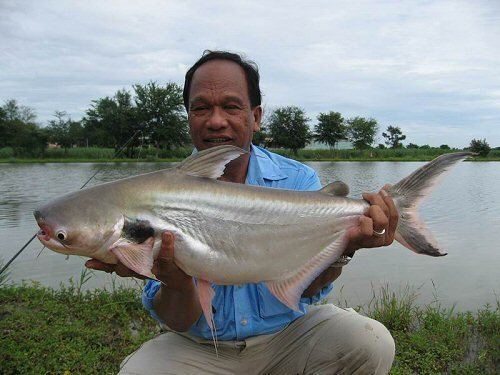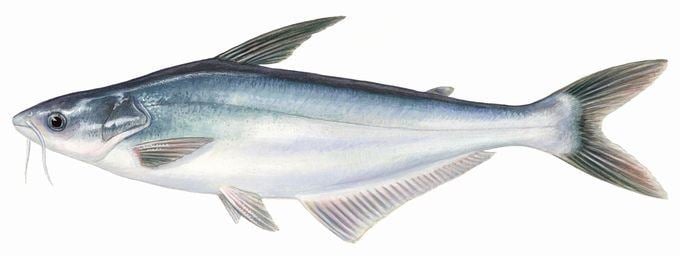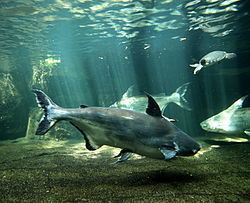Kingdom Animalia Family Pangasiidae Higher classification Shark catfish Rank Genus | Order Siluriformes Scientific name Pangasius Phylum Chordata | |
 | ||
Lower classifications Basa fish, Pangasius pangasius, Giant pangasius, Pangasius krempfi, Pangasius larnaudii | ||
Pangasius is a genus of medium-large to very large shark catfishes native to fresh water in South and Southeast Asia. The term "pangasius" is sometimes used to specifically refer to the commercially important basa fish, P. bocourti.
Contents

Pangasius cadovimex ii vietnam
Taxonomy

In 1993, Pangasius was one of two extant genera (along with Helicophagus) in the family Pangasiidae. At this point, it was split into four subgenera. Pangasius (Pangasianodon) included P. gigas and P. hypophthalmus and was diagnosed by the absence of mandibular barbels, the absence of teeth in adults and the presence of a single-lobed swimbladder. Pangasius (Pteropangasius) included P. micronema and P. pleurotaenia and was diagnosed by four lobes in the swimbladder and with multiple segments in the last lobe. Pangasius (Neopangasius) included P. nieuwenhuisii, P. humeralis, P. lithostoma, P. kinabatanganensis, diagnosed by palatal teeth arranged in a single large patch and high vertebral counts. Pangasius (Pangasius) was the final subgenus and had no diagnostic features, containing the remaining species. These subgeneric classifications were confirmed in 2000 except for Neopangasius, found to be polyphyletic and to be part of Pangasius (Pangasius), thus leaving three subgenera.
Since then, the subgenera have been variably recognized as separate. P. gigas and P. hypophthalmus have been classified in the genus Pangasianodon, and P. micronemus and P. pleurotaenia in the genus Pseudolais (with Pteropangasius as a junior synonym).

In 2011, Pangasius was sixth in the National Fisheries Institute’s "Top 10" list of the most consumed seafood in the United States. The Top 10 is based on tonnage of fish sold. According to the NFI, this mild-flavored white-fleshed fish is farmed in Asia, and is being used increasingly in food service. It is finding its way onto restaurant menus and into stores, as well, where one may see it called basa, tra, or swai.
Species
Currently, 21 recognized species are in this genus:
Fossil record
The single fossil species of this genus, P. indicus, is reported from the Paleogene period of Sipang, Sumatra, either from the Eocene or the Oligocene.
